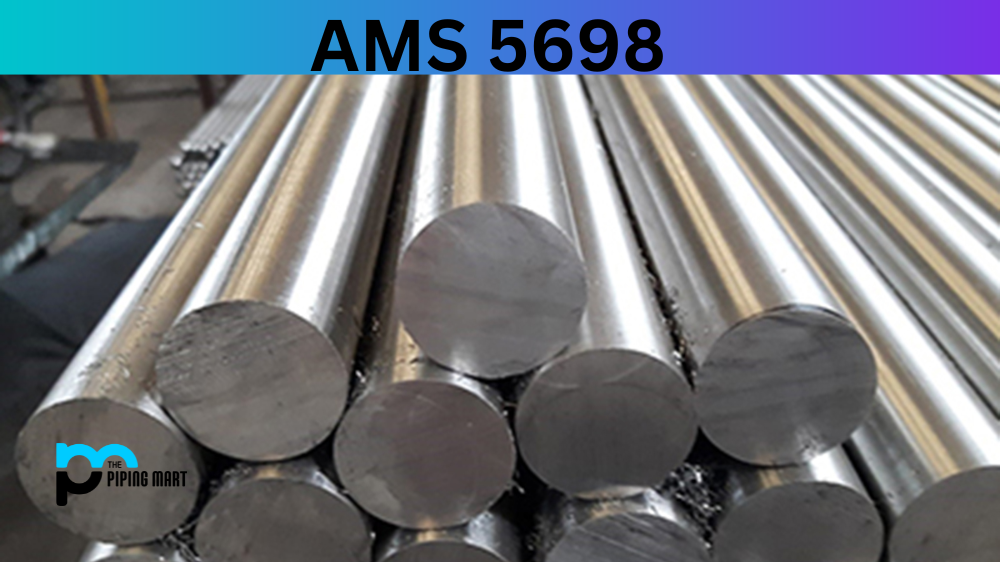AMS 4345 is a nickel alloy steel material often used in aerospace and chemical processing industries for its excellent corrosion resistance and high strength. It is known for its exceptional mechanical and physical properties, which make it a popular choice for high-stress applications. This blog post aims to provide insight into the composition, properties, and uses of AMS4345.
What is AMS 4345?
AMS 4345 ( also known as Aluminium 2090) is a specification created by the Aerospace Material Specification (AMS) committee that outlines the requirements for a particular type of alloy steel used in aircraft. This specification defines the chemical composition, mechanical properties, and heat treatment for AMS4345 steel, ensuring that it meets the strict safety and performance standards required in the aerospace industry. This type of steel is commonly used in critical aircraft applications such as landing gear components and fasteners. By adhering to the requirements outlined in AMS 4345, manufacturers can ensure that their products meet the highest standards of quality and reliability necessary for aviation safety.
AMS 4345 Composition
AMS 4345 is a nickel alloy steel that contains high amounts of chromium, molybdenum, and tungsten. It also contains small amounts of carbon, silicon, iron, manganese, and phosphorus. The most significant contribution to its properties is chromium, which makes up 20-22% of the composition.
| Element | Content (%) |
|---|---|
| Aluminum, Al | 93.2 – 95.6 |
| Copper, Cu | 2.4 – 3 |
| Lithium, Li | 1.9 – 2.6 |
| Magnesium, Mg | ≤ 0.25 |
| Titanium, Ti | ≤ 0.15 |
| Iron, Fe | ≤ 0.12 |
| Zinc, Zn | ≤ 0.10 |
| Silicon, Si | ≤ 0.10 |
| Zirconium, Zr | 0.080 – 0.15 |
| Manganese, Mn | ≤ 0.050 |
| Chromium, Cr | ≤ 0.050 |
| Other (each) | ≤ 0.050 |
| Other (total) | ≤ 0.15 |
AMS 4345 Physical Properties
AMS 4345 offers excellent physical properties, making it a favourite choice for engineering applications. The material has a density of 8.19 g/cm3 and a melting point of around 1365°C. It can withstand high temperatures, with a maximum operating temperature of 593°C. The alloy has a thermal expansion coefficient of 13.0 μm/m-°C and good thermal conductivity.
| Properties | Metric | Imperial |
|---|---|---|
| Density | 2.59 g/cm³ | 0.0936 lb/in³ |
| Melting point | 560 – 650°C | 1040 – 1200°F |
AMS 4345 Mechanical Properties
AMS 4345’s mechanical properties make it stand out from other alloy steels. The material exhibits excellent strength and hardness, with a tensile strength range of 160-190 ksi and yield strength of up to 140 ksi. Its elongation at break ranges from 10-15%, and it has a toughness value of 20-30 ft-lbs at room temperature. The material also has excellent fatigue resistance, making it ideal for critical applications.
| Properties | Metric | Imperial |
|---|---|---|
| Tensile strength (@diameter 12.7 mm/0.500 in) | 550 MPa | 79800 psi |
| Yield strength (@diameter 12.7 mm/0.500 in) | 520 MPa | 75400 psi |
| Elongation at break (@diameter 12.7 mm/0.500 in) | 6% | 6% |
| Poisson’s ratio | 0.34 | 0.34 |
| Elastic modulus | 76 GPa | 11000 ksi |
| Shear strength | 320 MPa | 46400 psi |
| Hardness, Brinell (@load 500 kg; thickness 10.0 mm) | 150 | 150 |
| Hardness, Knoop (converted from Brinell hardness value) | 191 | 191 |
| Hardness, Rockwell A (converted from Brinell hardness value) | 53.6 | 53.6 |
| Hardness, Rockwell B (converted from Brinell hardness value) | 87 | 87 |
| Hardness, Vickers (converted from Brinell hardness value) | 176 | 176 |
AMS 4345 Uses
AMS 4345 is widely used in the aerospace and chemical processing industries. Its corrosion resistance, strength, and toughness make it ideal for high-stress engineering applications, such as gas turbine engine components, airframe structures, and landing gear components. It is also popular for manufacturing chemical processing plants’ fittings, valves, and pumps.
AMS 4345 Hardness
AMS 4345’s hardness varies depending on the heat treatment it undergoes. As received, the alloy is in the range of 30 to 40 HRC. However, with heat treatment, AMS 4345 can reach a hardness of up to 54 HRC. The high hardness makes it suitable for manufacturing tools, dies, and moulds, where wear resistance is essential.
AMS 4345 Heat treatment
Heat treatment is a crucial step in the manufacturing of AMS 4345. The standard heat treatment process includes solution annealing at 1095°C, followed by a rapid quench in water. This process helps eliminate any residual stresses and ensures optimum mechanical properties. The alloy may undergo further tempering, quenching, or annealing depending on the specific application.
Conclusion
AMS 4345 is an alloy steel material with excellent corrosion, high strength, and wear resistance. Its mechanical and physical properties make it a favourite choice for the aerospace and chemical processing industries. Understanding its composition, properties, uses, hardness, and heat treatment can help engineers and manufacturers select the perfect material to meet their application and design requirements.

Meet Bhavesh, a seasoned blogger with a wealth of knowledge and experience. From metal products manufacturing to retail, Bhavesh has a diverse background in various industries and is dedicated to sharing his insights and expertise with readers.




